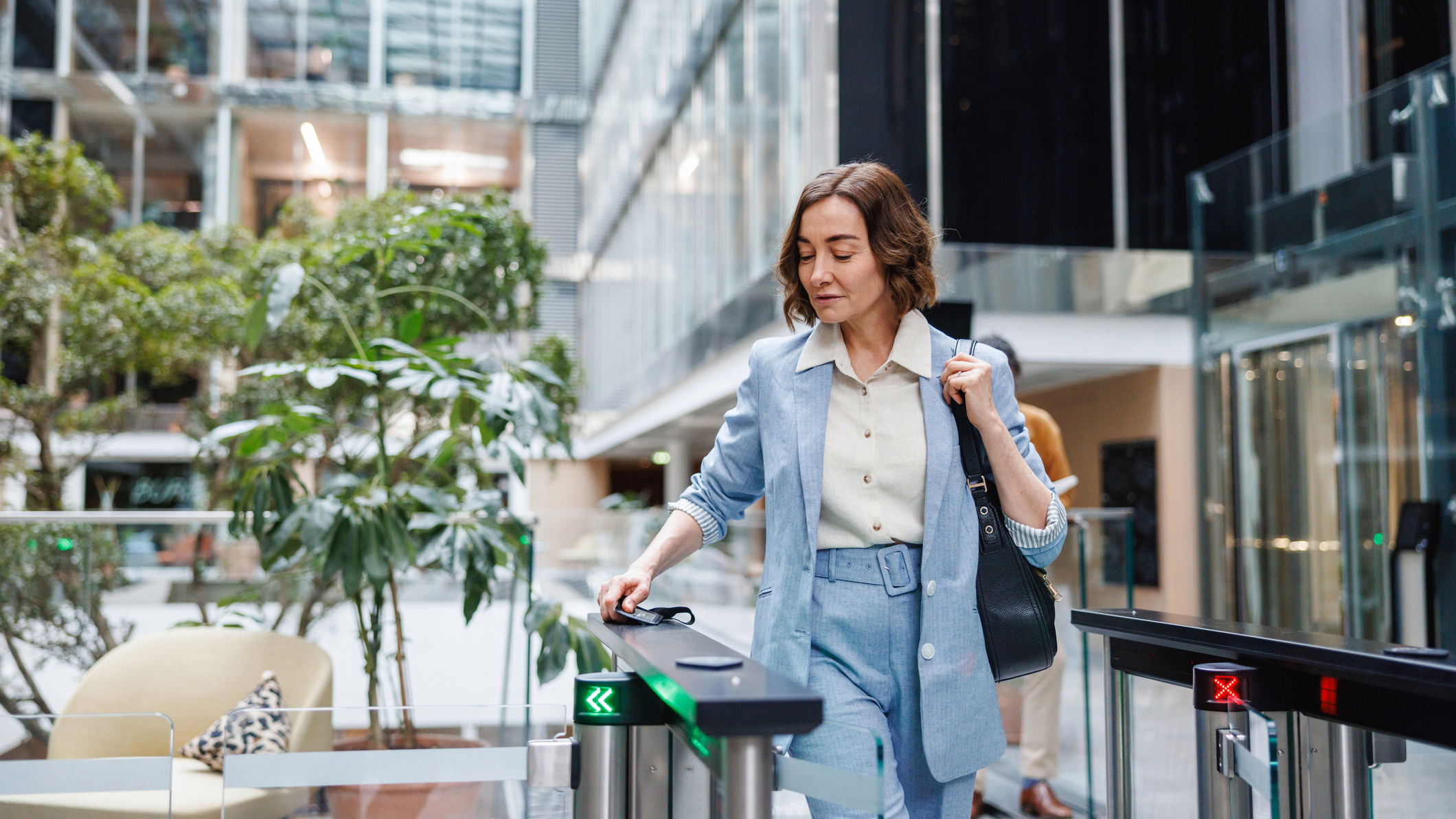If you make workers return to the office, here’s who you could lose
These three groups are the top ‘flight risk’ in companies that make return-to-office mandatory.


Companies that are rigid about their return to office plans risk seeing some of their top staff walk out the door as a result.
A survey of over 2,000 workers by analyst firm Gartner attempted to measure the impact of forcing staff to return to the office. It found that the average employees had an 8% lower ‘intent to stay’ in an organization with a strict policy about working in the office.
Even more worrying for bosses, for high-performing employees, the intent to stay was 16% lower, while among millennials and women, the intent to stay was 10% and 11% lower. Even managers themselves admitted they were less likely to stick around.
Caitlin Duffy, director in the Gartner HR practice, said the survey showed that strict return to the office policies can carry steep costs in terms of talent attraction and retention. Often these costs far outweigh the moderate benefits to employee engagement and effort.
“This is especially true for high-performers, women and millennials – three employee segments who greatly value flexibility,” she said.
Read more
For most employees in the survey, a return to work mandate meant working in the office five days a week, although some were required to work on-site just two to three days per week.
Workers might resent being forced back into the office, but there is growing demand from managers to get workspaces full again; a separate Gartner survey of HR leaders found that 63% had increased expectations around employees spending days in the office. While companies have tried to coax employees back, more are now resorting to stricter return to office mandates.
Get the ITPro daily newsletter
Sign up today and you will receive a free copy of our Future Focus 2025 report - the leading guidance on AI, cybersecurity and other IT challenges as per 700+ senior executives
This can backfire, however: The firm said that high-performers often see demands from bosses to get back to the office as a sign they aren’t trusted with the autonomy to make the best choices about getting work done. The problem for managers - these high-performing employees are able to find jobs at organizations that do offer hybrid or fully remote policies.
“Losing high-performers to attrition cost (sic) organizations in terms of productivity, difficulty in backfilling the role, and the overall loss of high-quality talent available to fill critical positions,” Duffy said.
RELATED RESOURCE

Discover HR leaders are using AI to guide their organization
WATCH NOW
Gartner said that throughout the pandemic, increased flexibility and the ability to work from home positively impacted women’s ability to manage work and life priorities. It added that in addition to flexibility, female employees said they prefer remote work because that can mean fewer encounters with microaggressions and biases, compared to being in the office.
As a result, women disproportionately face greater schedule complications and significant monetary costs related to caregiving responsibilities if they are required to be in the office.
The Gartner report also said that millennials are the generation most likely to have caregiving responsibilities and thus also benefit the most from added flexibility. The survey found millennial employees delivered lower performance at organizations that enforced a return to the office.
Gartner said HR should avoid setting a rigid return to the office policy and should instead try to find a different way to get people back to their place of work.
It suggests:
- Motivating employees to return, rather than ordering them, by designing their office space and hybrid policies to make employees feel autonomous, and connected.
- Consider policies that focus on-site attendance per year, not per week. Gartner said its research found that organizations setting a minimum number of in-office days per year got a better response than those mandating a minimum number of in-person days per week.
- Get workers to shape the policy. Employees who contributed to their teams' hybrid work arrangements demonstrated both higher engagement and work performance.
- Give worker a reason to come back. Organizations that transparently communicated their reasons for wanting employees to come into the office saw positive impacts on engagement, discretionary effort and retention.
While a number of high profile businesses – including big tech companies and banks – have been demanding that staff return to the office, staff have been reluctant. A separate piece of research by Gartner found that nearly half (48%) of employees thought their company’s mandates prioritize what leaders want, and not what employees need to do good work.
They may be right: Recent research from the University of Pittsburgh found that return to office mandates were often a bid to reassert control over employees and blame employees for poor company performance.
“Overall, our results do not support the argument that managers impose these mandates to increase firm values. Instead, these findings are consistent with managers using [return to office] mandates to reassert control over employees and blame employees as a scapegoat for bad firm performance,” the researchers said. They found significant declines in employees’ ratings of overall job satisfaction, work-life balance, senior management and corporate culture after a firm announced a return to office order.
The research also found no link between having a return to office policy and significant changes in profitability, noting: “Our findings are consistent with employees’ concerns that managers use [return to office] for power grabbing and blaming employees for poor performance.”
Demanding that staff return to the office might be good for bosses who like to see a busy workplace, but it also runs counter to one of the other big employment trends – the gradual shift towards a four-day week – which means this debate is likely to rumble on for a while yet.
Steve Ranger is an award-winning reporter and editor who writes about technology and business. Previously he was the editorial director at ZDNET and the editor of silicon.com.
-
 Bigger salaries, more burnout: Is the CISO role in crisis?
Bigger salaries, more burnout: Is the CISO role in crisis?In-depth CISOs are more stressed than ever before – but why is this and what can be done?
By Kate O'Flaherty Published
-
 Cheap cyber crime kits can be bought on the dark web for less than $25
Cheap cyber crime kits can be bought on the dark web for less than $25News Research from NordVPN shows phishing kits are now widely available on the dark web and via messaging apps like Telegram, and are often selling for less than $25.
By Emma Woollacott Published
-
 Young tech professionals are shunning a full-time return to the office – unless it pays more
Young tech professionals are shunning a full-time return to the office – unless it pays moreNews Young tech professionals who entered the workforce post-pandemic expect on-site work to be paid more than remote options.
By Emma Woollacott Published
-
 ‘Employers must look at the bigger picture’: Brits aren’t keen on going back to the office, and enterprises pushing for it risk a talent exodus – 48% of UK professionals would quit if faced with a full RTO mandate as hybrid work remains popular
‘Employers must look at the bigger picture’: Brits aren’t keen on going back to the office, and enterprises pushing for it risk a talent exodus – 48% of UK professionals would quit if faced with a full RTO mandate as hybrid work remains popularNews Nearly half of professionals would consider quitting rather than returning to the office full time
By Nicole Kobie Published
-
 IT professionals aren’t budging on flexible work demands – and more than half say they’ll quit if employers don’t meet expectations
IT professionals aren’t budging on flexible work demands – and more than half say they’ll quit if employers don’t meet expectationsNews Analysis from Randstad shows 40% of UK-based IT pros have quit over a lack of flexible work options, while 31% of workers globally have done the same.
By Ross Kelly Published
-
 Employees are dead set on flexible working arrangements – three quarters would turn down a role that didn't offer hybrid options as work-life balance becomes more important than pay
Employees are dead set on flexible working arrangements – three quarters would turn down a role that didn't offer hybrid options as work-life balance becomes more important than payNews New research shows workers are increasingly demanding flexible working arrangements from employers.
By Emma Woollacott Published
-
 Rugged devices
Rugged devicesWhitepaper A closer look at the challenges and rewards of fully supporting a flexible workplace
By ITPro Published
-
 Secure, flexible remote working
Secure, flexible remote workingWhitepaper A closer look at the challenges and rewards of fully supporting a flexible workplace
By ITPro Published
-
 Work smarter, not harder
Work smarter, not harderWhitepaper A closer look at the challenges and rewards of fully supporting a flexible workplace
By ITPro Published
-
 Cracks begin to show in hybrid working as more staff report ‘video call fatigue’ – but nearly a third would still quit if faced with an RTO mandate
Cracks begin to show in hybrid working as more staff report ‘video call fatigue’ – but nearly a third would still quit if faced with an RTO mandateNews Younger workers would rather quit than go back to the office full-time
By Nicole Kobie Published